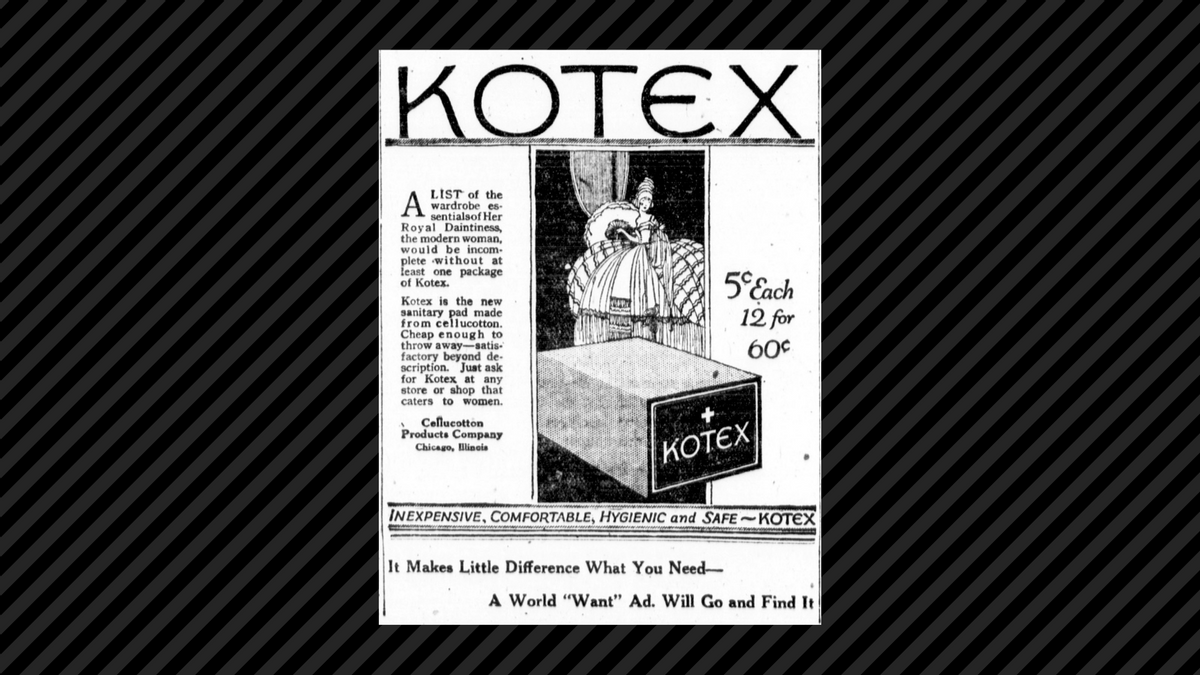Origins: Though no soldiers were charging about the battlefield with sanitary napkins tied to their arms, a new type of material which had proved so effective as bandages in that conflict was years later revamped into Kotex. What was invented to meet a critical need in a war soon afterwards found a valuable peacetime use.
Kotex is a product of the Kimberly-Clark company. In 1914 this (then) conservative supplier of paper developed an absorbent wadding from processed wood and dubbed it Cellucotton. Five times as absorbent as cotton and costing only half as much, Cellucotton was used to bandage wounds in World War I. (Kimberly-Clark agreed to provide it to the War Department at cost, refusing the chance to make a healthy profit.)
After the war (1919), Kimberly-Clark faced the question of what to do with Cellucotton. The company hit upon the notion of marketing disposable sanitary napkins. Prior to this invention, women used and reused cloth rags — this was indeed groundbreaking stuff.
The resulting product was first marketed as Cellunap, a contraction of "Cellucotton napkins." Immediately upon hire, Kimberly-Clark's first marketing agency (Charles F.W. Nichols Company) suggested changing the name to Kotex, short for "cotton textile".
Though there were still battles to be waged in getting magazines to accept ads for this product, stores to stock it, and women to buy it, by 1945 nearly all American women were using commercially-made pads and tampons (Tampax came on the market in 1936). The days of the cloth rags were over.

